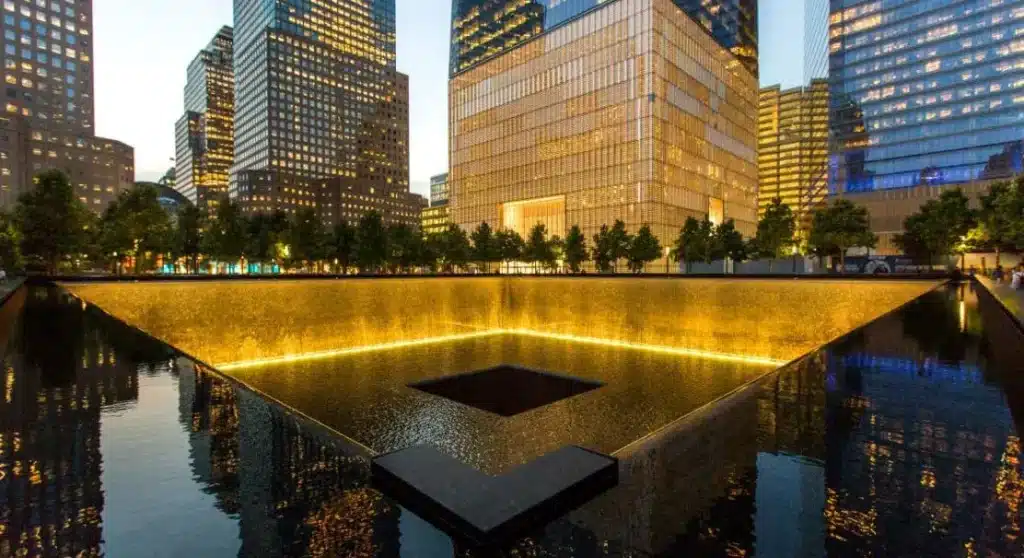The visit to the 9/11 Memorial & Museum in Manhattan is not just a journey through a dark day in American history, but a profound narrative on the resilience and indomitable spirit of humanity. As you walk through the serene space of the memorial, where the names of the lost are etched in bronze, a silent yet powerful dialogue emerges about the impact of collective memory in healing and rebuilding. The museum further extends this dialogue, presenting artifacts and stories that encapsulate the pain, heroism, and eventual recovery. Such an experience invites us to question how we, as a society, remember tragedy and utilize those memories to forge a resilient future. How do we balance remembrance and recovery in a way that honors the past while looking forward?
Exploring the Memorial’s Design
The 9/11 Memorial, designed by architect Michael Arad and landscape architect Peter Walker, thoughtfully integrates symbolic architecture with tranquil waterfalls to encapsulate both the tragedy and resilience associated with September 11, 2001.
Situated at the very site of the Twin Towers’ foundations, the memorial’s twin reflecting pools are expansive, each nearly an acre in size. They are marked by the largest man-made waterfalls in North America, which poignantly drown out the city’s clamor, allowing for a moment of reflection in bustling Manhattan.
Around the pools, bronze parapets are inscribed with the names of the 2,983 victims, offering a personal touch that invites visitors to remember and connect. This design fosters a collective mourning and healing, reinforcing our shared humanity in the face of past adversities.
Insights From the Museum Exhibits
Continuing from the serene atmosphere of the Memorial, the Museum offers a profound journey through the narratives and artifacts that detail the events of September 11, 2001.
Each exhibit is meticulously curated to foster a deep understanding and connection. Visitors encounter personal stories of loss, heroism, and resilience, which are interwoven with the larger historical context.
The presentation of recovered objects, from firefighters’ helmets to part of the original World Trade Center steel, serves as tangible reminders of the day’s impact.
Through multimedia displays and firsthand accounts, the Museum not only educates but also emotionally engages its audience, creating a space where collective memory and individual experiences resonate together, strengthening the bonds of community and shared history.
Read More:
The Heartbeat of the City: Discovering Times Square in Manhattan, NY
City From Above: a Visit to the Empire State Building in Manhattan, NY

